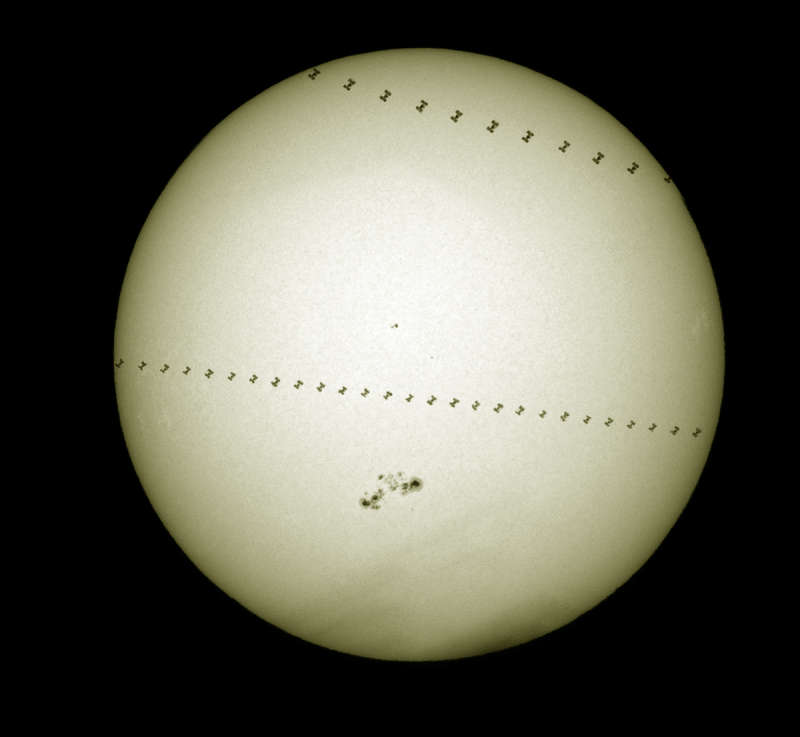
|
Credit & Copyright: Hartwig Luethen
Explanation:
Not once, but twice the
International Space Station
transits the Sun on consecutive
orbits of planet Earth
in this video frame composite.
The scene was captured
on August 22 from a single well-chosen location in Schmalenbeck,
Germany where the ISS created intersecting shadow paths only
around 7 kilometers wide.
Crossing the solar disk in a second or less,
the transits themselves were separated in time
by about 90 minutes, corresponding to the space station's orbital period.
while the large,
flare-producing
sunspot group below center, AR 2043, remained a
comfortable 150 million kilometers away, the distance between camera
and orbiting station was 656 kilometers for its first (upper) transit
and 915 kilometers for the second more central transit.
In remarkably sharp silhouette, the ISS is noticeably
larger in angular size during the closer, first pass.
Of course, tomorrow the Moon will transit the Sun.
But even at well-chosen locations, its dark, central shadow
just misses the Earth's surface creating a
partial
solar eclipse.
|
January February March April May June July August September October November December |
| ||||||||||||||||||||||||||||||||||||||||||||||||
NASA Web Site Statements, Warnings, and Disclaimers
NASA Official: Jay Norris. Specific rights apply.
A service of: LHEA at NASA / GSFC
& Michigan Tech. U.
Based on Astronomy Picture
Of the Day
Publications with keywords: international space station - transit
Publications with words: international space station - transit
See also:
